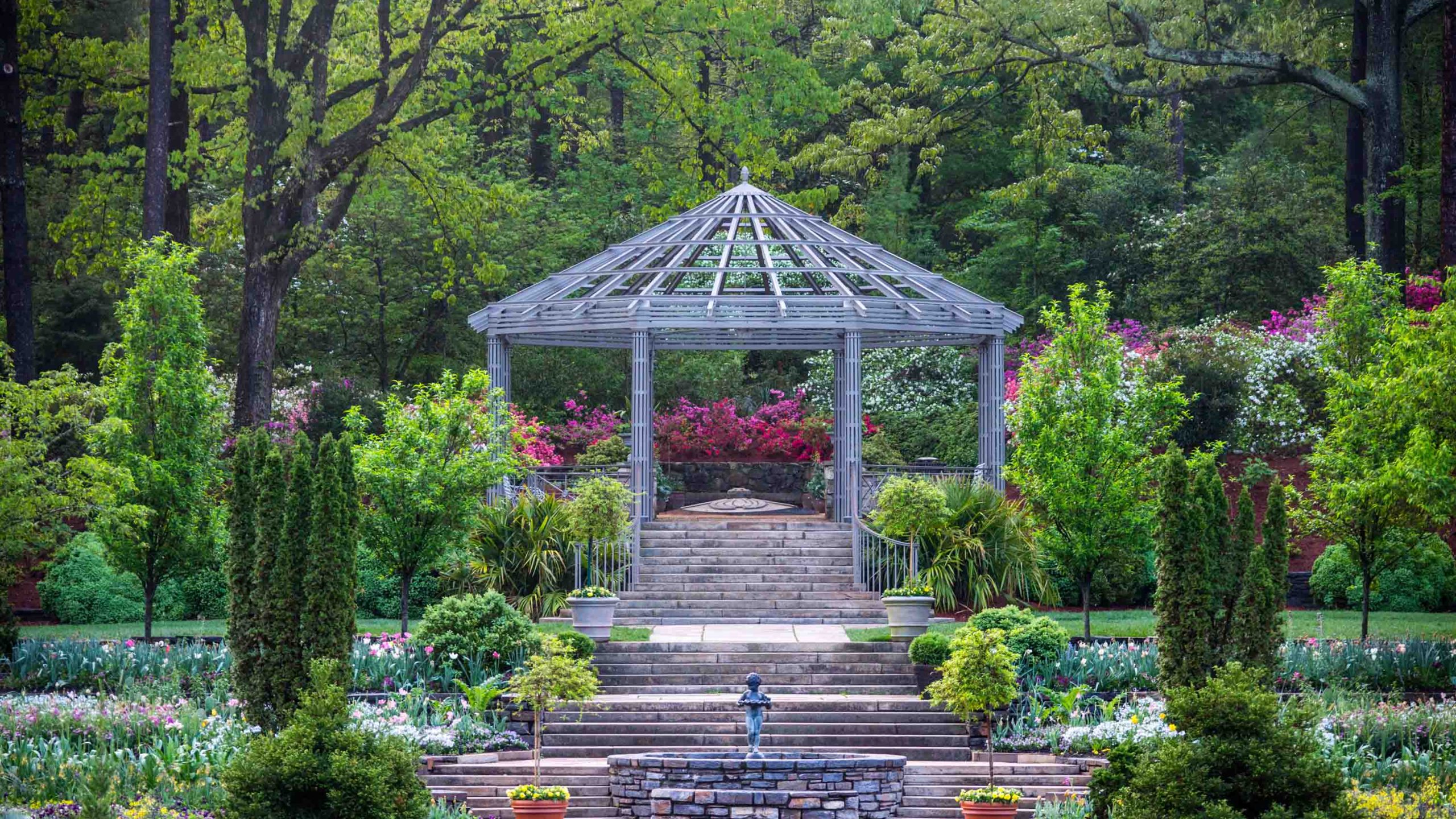The Cindy Brodhead Pergola is one of the most iconic landmarks in Duke Gardens.
Situated at the pinnacle of the historic Terrace Gardens, the metal frame pergola was designed by pioneering landscape architect Ellen Biddle Shipman and constructed in 1938-39. In her original plan for the terraces, Shipman specified a flowering vine to adorn the pergola. She chose Chinese wisteria (Wisteria sinensis). It was planted most likely in the fall of 1938 or winter of 1939, when the majority of the terrace plantings were installed.
Chinese wisteria was first introduced to the U.S. in 1816 to support the nascent horticulture trade. With its fast growth and long trailing racemes of lilac-colored flowers, it became a very popular vine for shade and fragrance, used primarily adjacent to porches, on gazebos and rambling down fences in the Victorian landscape.
Unfortunately, its beauty belied its aggressiveness, and as with many introduced plants, its hostile tendencies were not realized for many years after its introduction. Over two centuries it has escaped to areas throughout the South, and it frequently climbs 50 to 75 feet high, engulfing trees, houses and anything else in its path. Because of this aggressive nature, this wisteria is on invasive plant lists from Virginia to Texas.
In May 2014, Duke Gardens celebrated the 75th anniversary of its dedication in 1939. We then began a project focused on restoring the pergola’s metal frame structure as well as replanting a new wisteria vine to crown it. The restoration of the pergola, which required cutting back the vines in order to access the metal structure itself, presented an ideal opportunity to reconsider our wisteria species selection. The Chinese wisteria had not been blooming healthily in recent years, in part because of its age and also because it had wound its way between narrow slots in the metal ages ago, choking itself as it grew wider over the decades.
None of the less invasive alternatives, including the native Wisteria frutescens, was deemed to equal the outstanding floral display of the original. So initially we had intended to simply cut back the Chinese wisteria and control it strictly as it regrew. However, in light of our recent strategic planning process, which includes the goal to embody environmental sustainability throughout Duke Gardens operations, we have reversed our course and will replace the Chinese wisteria with the non-invasive native species.
While the new vines will take several years to mature and cover the metal structure, we expect the purple blooms to look gorgeous and as photogenic as ever. We are proud to that this iconic beauty now serves as yet another example of Duke University’s and Duke Gardens’ commitment to sustainability.

The original plans for the pergola, designed by Ellen Biddle Shipman and drafted by her associate Elizabeth Strang.

The pergola today in early spring. Photo by Rick Fisher.

Damage to the pergola metalwork caused by Chinese wisteria (Wisteria sinensis). Photo by Bobby Mottern.

Native Wisteria frutescens, which was planted in 2014 as part of the pergola restoration. Photo by Sue Lannon.

Native Wisteria frutescens in bloom. Photo by Sue Lannon.
Questions about the Cindy Brodhead Pergola?
Please contact us at gardens@duke.edu.
